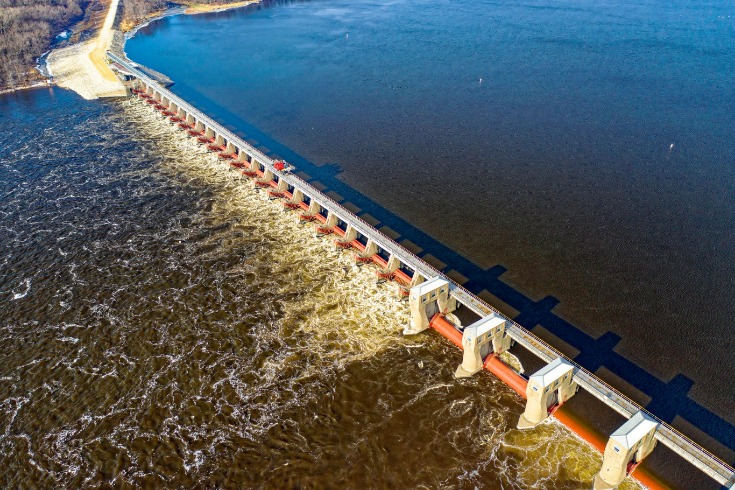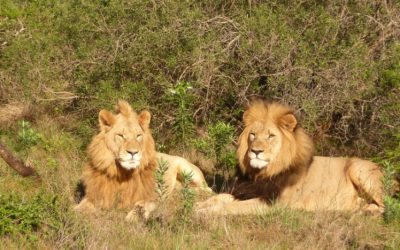Geographical Overview of the Botswana Delta
The Botswana Delta, also known as the Okavango Delta, is a vast inland delta located in northwestern Botswana. Renowned for its stunning biodiversity and unique ecosystem, it is one of the world’s largest inland wetlands. The delta is formed by the seasonal flooding of the Okavango River, creating a lush, water-rich environment that attracts a diverse array of wildlife. Its intricate network of waterways, swamps, and islands makes it a vital ecological region and a UNESCO World Heritage Site.
Location and Size
The Botswana Delta, also known as the Okavango Delta, is a vast inland delta located in the northwestern part of Botswana in Southern Africa. It is one of the world’s largest inland wetlands, covering an approximate area of 22,000 square kilometers during the seasonal flooding. The delta is formed where the Okavango River disperses into the Kalahari Desert, creating a unique and vibrant ecosystem that supports a wide variety of wildlife and plant species. Its geographical position makes it a critical habitat for numerous endemic and migratory species, and it is renowned for its stunning landscapes and rich biodiversity.
Topography and Landscape Features
The Botswana Delta, also known as the Okavango Delta, is a vast inland delta situated in the northwestern part of Botswana. It is renowned for its unique and dynamic landscape shaped by seasonal floods and rich biodiversity. The delta is formed by the Okavango River, which flows from Angola into the Kalahari Desert, creating a complex network of waterways, lagoons, and islands.
The topography of the Botswana Delta is characterized by low-lying plains with gentle undulations that facilitate the spread of floodwaters across the region. The landscape features sprawling floodplains, scattered islands, and reed beds that support diverse ecosystems. The area remains relatively flat, with elevations typically ranging from 900 to 1,100 meters above sea level, providing an ideal habitat for a wide variety of flora and fauna.
Within the delta, landscapes vary from lush perennial wetlands to dry savannah patches. The floodwaters gradually inundate the plains during the rainy season, transforming the landscape into a vibrant mosaic of waterways and terrestrial habitats. This dynamic topography not only sustains an abundance of wildlife but also contributes to the delta’s reputation as one of the world’s largest and most pristine inland river deltas.
Climate and Weather Patterns
The Botswana Delta, also known as the Okavango Delta, is a vast inland delta situated in the northwestern part of Botswana. It is one of the world’s largest inland deltas, covering approximately 15,000 to 22,000 square kilometers during seasonal floods. The delta is characterized by a unique landscape of floodplains, islands, and channels, which support a diverse range of flora and fauna. Its geographical location in the Kalahari Basin influences its water dynamics, making it a vital ecological zone.
The climate of the Botswana Delta region is semi-arid, with distinct wet and dry seasons. The area experiences high temperatures during the summer months, often exceeding 30°C (86°F), and cooler temperatures in winter. The wet season typically occurs from November to March, bringing heavy rains that flood the delta, while the dry season extends from April to October, leading to water receding and increased aridity. These seasonal patterns are crucial in shaping the delta’s ecological processes and wildlife migrations.
Hydrology and Water Systems
The Botswana Delta, a vital component of the Okavango River Basin, exemplifies the complex interactions within hydrology and water systems. This dynamic region relies on the seasonal floodwaters to sustain its diverse ecosystems and support local communities. Understanding the hydrological processes in the delta is essential for managing water resources, preserving biodiversity, and ensuring the resilience of this unique environment amid changing climate conditions.
Major Rivers and Tributaries
The Botswana Delta, also known as the Okavango Delta, is one of the most remarkable ecosystems in Africa. It is a vast inland delta fed by the Okavango River, which flows from Angola into Botswana. The delta supports diverse hydrological features, including major rivers and numerous tributaries that sustain its unique environment.

- The Okavango River is the primary water source for the delta, originating from the highlands of Angola and flowing southwestward into Botswana.
- Major tributaries of the Okavango River include the Bawenge and the Cuito rivers, which contribute additional water flow and sediment.
- The delta is characterized by a network of channels, lagoons, and floodplains that expand during the seasonal floods, creating a vital habitat for wildlife.
- Water flow in the delta fluctuates seasonally, driven by rainfall patterns in Angola, which determine the extent of flooding and the availability of water for flora and fauna.
The hydrology of the Botswana Delta is crucial for maintaining its biodiversity, supporting ecosystems, and sustaining local communities that rely on the delta’s resources. Protecting these water systems ensures the continued health and vitality of this unique wilderness area.
Seasonal Flooding Cycles
The Botswana Delta, also known as the Okavango Delta, is a unique inland delta that experiences distinct seasonal flooding cycles, which are vital for maintaining its rich ecosystems. These flooding cycles are primarily driven by seasonal rains in the higher lands of Angola and Namibia, with water gradually flowing into the delta during the rainy season from November to March. As the floodwaters infiltrate and spread across the floodplain, they create a dynamic hydrological system that sustains diverse wildlife and plant species. The seasonal flooding typically peaks between June and August, bringing vital nutrients and shaping the water systems that support the area’s biodiversity. Throughout the dry season, the water recedes, leaving pockets of water that serve as crucial habitats for animals and birds. This cyclical pattern of flooding and receding is essential for groundwater recharge and influences the overall hydrology of the region, making the Botswana Delta a remarkable example of water system resilience and ecological balance. Observing these cycles is critical for sustainable management and conservation efforts in the area.
Water Sources and Sustainability
The Botswana Delta, also known as the Okavango Delta, is one of the world’s most unique and vital hydrological systems. It is a vast inland delta that relies heavily on the seasonal flooding caused by rainfall in the Angolan highlands, which sustains the diverse ecosystems and local communities in Botswana. Ensuring the sustainability of water sources within this delicate environment is crucial for maintaining biodiversity and supporting human livelihoods.
- The Okavango Delta serves as a critical habitat for diverse wildlife, including elephants, lions, and numerous bird species, which depend on consistent water supply.
- Hydrology in the delta is characterized by seasonal flooding that results from rainfall in the catchment areas, shaping the wetland’s ecology each year.
- Water sources in the delta are primarily reliant on natural hydrological processes, but climate change and upstream water management threaten its sustainability.
- Efforts are underway to monitor and protect water sources, ensuring that the delta remains a sustainable water system that supports both ecosystems and local communities.
- Managing water use and promoting conservation are essential to maintaining the delta’s health amid increased tourism and development pressures.
Ecology and Biodiversity
The Okavango Delta in Botswana is a remarkable example of ecological diversity and natural beauty. It is one of the world’s largest inland deltas, teeming with a wide variety of plant and animal species. The delicate balance of this unique ecosystem highlights the importance of conserving biodiversity and understanding ecological relationships that sustain life in this vibrant habitat.
Key Flora and Vegetation Zones
The Okavango Delta in Botswana is a remarkable ecological region renowned for its rich biodiversity and unique vegetation zones. This sprawling inland delta supports a diverse array of flora, including riparian woodlands, grasslands, and wetlands, each contributing to the region’s vibrant ecosystem. Key plant species such as acacia trees, marula trees, and papyrus reeds thrive in different parts of the delta, providing habitats for numerous animal species. The delta’s vegetation zones are characterized by floodplains that are seasonal and permanent swamps, making it a vital habitat for a variety of wildlife. These ecosystems play a crucial role in maintaining ecological balance, supporting bird populations, aquatic life, and terrestrial mammals, which collectively make the Okavango Delta a UNESCO World Heritage Site and a global ecological treasure.
Fauna Diversity and Migration Patterns
The Botswana Delta, part of the Okavango Delta, is a vital ecological region renowned for its rich biodiversity and complex ecosystem dynamics. This unique wetland supports a wide variety of flora and fauna, making it a crucial habitat for many species during different seasons.
Ecology and biodiversity in the Botswana Delta are characterized by a diverse range of habitats, including floodplains, wooded islands, and grasslands. These environments sustain an array of plant and animal life, fostering high levels of species richness and ecological interactions.
Fauna diversity in the delta is remarkable, with numerous mammal, bird, reptile, and fish species. Iconic animals such as elephants, lions, leopards, rhinoceroses, and buffalo roam the area, while the delta is also a haven for over 400 bird species including kingfishers, herons, and pelicans, which thrive in its aquatic ecosystems.
Migration patterns are a vital aspect of the delta’s ecological rhythm. Many animals, particularly elephants and other large mammals, undertake seasonal migrations driven by water availability and food resources. The changing floodwaters facilitate movement across the delta, ensuring survival and genetic diversity within populations.
Overall, the Botswana Delta’s ecological health relies on the delicate balance of its biodiversity and the natural migration patterns that sustain its ecosystems, emphasizing the importance of conservation efforts to preserve this extraordinary environment.
Endangered Species and Conservation Efforts
The Okavango Delta in Botswana is a vital ecological treasure, home to a diverse array of flora and fauna that depend on its unique wetland ecosystem. This vast inland delta hosts numerous endangered species, including the African wild dog, white rhinoceros, and the Delta’s iconic elephants, whose populations are threatened by habitat loss and poaching. Conservation efforts in the region focus on protecting these species through anti-poaching initiatives, community engagement, and eco-tourism development, which help generate funds and raise awareness for biodiversity preservation. The Botswana government, alongside international organizations, actively works to safeguard the delta’s fragile environment by implementing sustainable management practices aimed at maintaining the ecological integrity and supporting the survival of endangered species for future generations.
Human Settlements and Cultural Significance
The Botswana Delta, also known as the Okavango Delta, is a remarkable human settlement that holds deep cultural significance for the local communities. This unique inland delta not only sustains diverse ecosystems but also serves as a vital part of the cultural identity and traditional livelihoods of the people living in the region. Its extensive waterways and lush landscapes have shaped centuries of cultural practices, making it a vital area of historical and social importance.
Local Communities and Livelihoods
The Botswana Delta, also known as the Okavango Delta, holds immense significance in human settlements and cultural heritage. It is a vital source of water and resources for local communities, supporting diverse livelihoods such as fishing, farming, and tourism. The delta’s unique ecosystem has shaped the cultural practices and traditions of the indigenous peoples, including the Bayei, Hambukushu, and Herero communities, who have historically depended on its riches for sustenance and cultural identity.
Communities living around the delta have developed a deep connection with their environment, often integrating their spiritual beliefs and customs with the natural landscape. The delta not only provides economic opportunities but also serves as a cultural symbol that fosters a sense of belonging and continuity for local residents. Sustainable management of these human settlements is crucial to preserve both the ecological integrity of the delta and the cultural heritage of its inhabitants.
Cultural Heritage and Traditional Practices
The Botswana Delta, also known as the Okavango Delta, is a remarkable human settlement that holds deep cultural significance for the indigenous communities living nearby. This vast wetland ecosystem has shaped the traditional practices and lifestyles of the local peoples for centuries, serving as a vital source of livelihood, spirituality, and community identity. The delta’s unique environment has fostered a rich cultural heritage that is reflected in their folklore, rituals, and craftsmanship.
Traditional practices in the Okavango Delta are closely linked to the natural rhythms of the floodwaters and the diverse wildlife that inhabit the region. Community members often engage in fishing, hunting, and gathering as integral aspects of their daily routines, passed down through generations. These practices are not only economic activities but also cultural expressions that reinforce a deep connection to the land and water.
The Okavango Delta is recognized as a UNESCO World Heritage Site, highlighting its importance in preserving both the natural environment and the cultural heritage of the indigenous peoples. Efforts are made to protect traditional knowledge, customary land use, and local customs, ensuring that the cultural practices remain vibrant and integral to the community’s way of life. The delta thus stands as a testament to the enduring relationship between human settlements and their natural surroundings, emphasizing the importance of preserving both environmental and cultural heritage for future generations.
Impact of Human Activity on Ecosystem
The Okavango Delta in Botswana is a breathtaking example of human settlements intertwined with rich cultural significance. It is home to various indigenous communities, such as the Khoisan and Bayei people, who have traditionally relied on the delta’s resources for their livelihoods. These settlements have preserved unique cultural practices, oral histories, and traditional knowledge that contribute to the region’s diverse heritage. The delta’s natural environment influences the customs and lifestyles of its inhabitants, fostering a deep connection between people and nature.
However, human activity in the Okavango Delta has notable impacts on the ecosystem. Increasing settlements, tourism, and agriculture exert pressure on the delicate wetland environment, leading to habitat destruction and changes in water flow. Infrastructure development can disrupt the natural flood cycles crucial for maintaining biodiversity and supporting ecosystems. Overuse of resources, such as water and fish, can threaten the sustainability of both human communities and wildlife. Balancing human habitation with conservation efforts is essential to preserve the delta’s ecological integrity and cultural legacy for future generations.
Conservation Challenges and Initiatives
The Okavango Delta in Botswana faces numerous conservation challenges, including habitat degradation, water management issues, and the impact of human activities. Despite these obstacles, various initiatives aiming to protect this UNESCO World Heritage Site have been implemented, involving local communities, government agencies, and international organizations. These efforts focus on maintaining the ecological integrity of the delta while supporting the livelihoods of those who depend on its resources.
Environmental Threats
The Botswana Delta, also known as the Okavango Delta, faces significant conservation challenges due to environmental threats such as climate change, habitat degradation, and human activities. The increasing frequency of droughts and unpredictable rainfall patterns threaten the delicate ecosystem, impacting both plant and animal species that rely on the delta’s wetlands. Poaching and illegal wildlife trade further exacerbate the threat to iconic species like elephants, lions, and rhinoceroses, putting their populations at risk. In response, numerous conservation initiatives have been implemented, including community-based resource management programs and protected area designs that involve local communities in safeguarding their natural heritage. Additionally, sustainable tourism and eco-friendly practices are promoted to generate revenue while minimizing environmental impact, helping to ensure the long-term preservation of the delta’s unique biodiversity.
Protected Areas and Reserves
The Okavango Delta in Botswana faces significant conservation challenges due to increasing human activity, climate change, and unpredictable water flow patterns. These threats threaten the unique ecosystem that supports a diverse range of flora and fauna. To address these issues, various initiatives have been implemented, including community-based conservation programs, sustainable tourism practices, and water management strategies aimed at preserving the delta’s natural hydrology. Protected areas and reserves, such as the Moremi Game Reserve and the Bucks Island Wilderness, play a crucial role in safeguarding wildlife and habitats. These designated zones help regulate tourism, prevent illegal poaching, and promote environmental awareness. Collaborative efforts between government agencies, local communities, and international organizations continue to be essential in ensuring the sustainable conservation of the Botswana Delta for future generations.
International and Local Conservation Programs
The Okavango Delta in Botswana faces several conservation challenges, including habitat degradation, poaching, and the impacts of climate change. To address these issues, various international and local conservation programs have been implemented to preserve this unique ecosystem and support its biodiversity. These initiatives aim to balance ecological preservation with sustainable human activity in the region.
- Community-Based Natural Resource Management (CBNRM) programs empower local communities to participate in conservation efforts, providing incentives for sustainable resource use.
- Protected areas such as the Moremi Game Reserve and Khwai Concession serve as crucial refuges for wildlife, with strict regulations to prevent illegal hunting and habitat destruction.
- The Okavango Partner Project, involving Botswana government authorities, NGOs, and international agencies, focuses on habitat restoration, anti-poaching measures, and sustainable tourism promotion.
- International organizations like the World Wildlife Fund (WWF) have initiated programs to monitor biodiversity health, combat climate change effects, and promote awareness about the delta’s ecological importance.
- Awareness campaigns and eco-tourism initiatives are designed to promote responsible tourism, ensuring that visitor activities do not threaten the delicate environment of the delta.
Tourism and Sustainable Development
The Okavango Delta in Botswana is a remarkable destination that exemplifies the harmony between tourism and sustainable development. As one of Africa’s most valuable natural ecosystems, it attracts visitors from around the world while emphasizing the importance of preserving its unique environment. Sustainable tourism practices in the delta aim to balance economic growth with environmental conservation, ensuring that future generations can enjoy its breathtaking landscapes and rich biodiversity.
Tourist Attractions and Activities
The Botswana Delta, also known as the Okavango Delta, is one of Africa’s most remarkable and unique tourist attractions, offering exceptional opportunities for sustainable tourism and eco-friendly activities. This vast inland delta is renowned for its rich biodiversity, pristine ecosystems, and breathtaking landscapes, making it a vital destination for travelers seeking both adventure and conservation. Visitors can enjoy a range of activities such as game drives, birdwatching, mokoro canoe excursions, and guided walking safaris, all designed to promote low-impact tourism practices. The local communities and conservation organizations work together to ensure that tourism benefits both the environment and local populations, fostering sustainable development in the region. By prioritizing eco-conscious travel and responsible wildlife viewing, the Botswana Delta continues to serve as a model for balancing tourism growth with environmental preservation, ensuring that its natural beauty remains intact for future generations.
Impact of Tourism on the Ecosystem
The Okavango Delta in Botswana is a renowned UNESCO World Heritage Site and a vital habitat for diverse wildlife, attracting numerous tourists annually. While tourism provides significant economic benefits to local communities and promotes conservation efforts, it also poses challenges to the fragile ecosystem of the delta. Increased human activity can lead to habitat degradation, pollution, and disturbance to wildlife, threatening the delicate balance of this unique environment. Sustainable tourism practices are essential to minimize negative impacts, such as restricting access to sensitive areas, promoting eco-friendly accommodations, and educating visitors on conservation. By fostering responsible tourism, Botswana can ensure that the delta remains a thriving ecosystem for future generations while supporting the socio-economic development of local populations.
Strategies for Sustainable Tourism
The Botswana Delta, also known as the Okavango Delta, is a pristine and unique ecosystem that offers immense potential for sustainable tourism development. To ensure the preservation of this precious environment while promoting tourism, strategies focused on sustainability are essential. Implementing eco-friendly practices, such as limiting the number of visitors and promoting eco-conscious behavior, helps reduce environmental impact. Community involvement is also crucial; empowering local communities through training and benefiting from tourism can foster conservation efforts and ensure that the delta’s resources are preserved for future generations. Additionally, promoting responsible tourism that emphasizes education about the delta’s fragile ecosystem can enhance visitor awareness and support conservation initiatives. Sustainable infrastructure development, like eco-lodges that blend into the natural landscape, ensures minimal ecological disruption. Overall, a balanced approach that prioritizes environmental preservation, community engagement, and responsible tourism practices is key to the long-term success of tourism in the Botswana Delta.





0 Comments